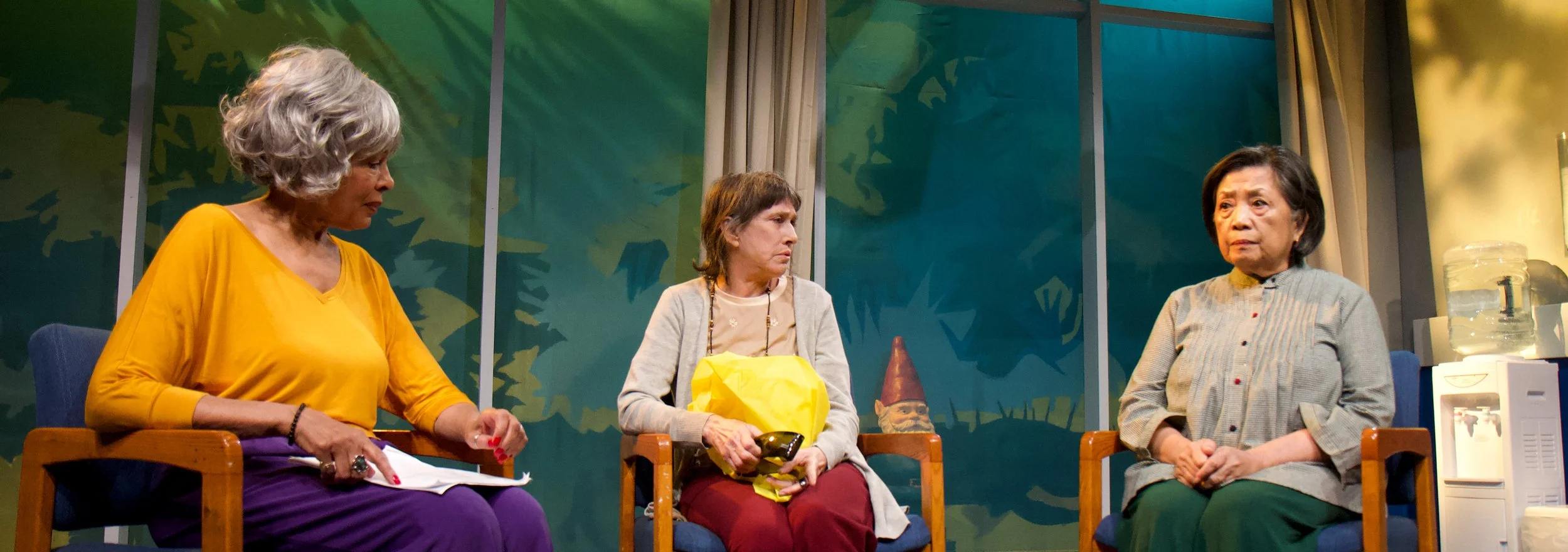Callback is a two person-play with four actors. The script, written by acclaimed film, television, and theater writer Bill Svanoe, follows a budding friendship between a director, Ed, and an actress, Judy, that spans more than 40 years. Because of this timeline, the director has chosen two different casts to play Ed and Judy. The two headlining actors are veterans, while the two in the second cast are younger, up-and-coming performers. The production reviewed here features veteran actors Joan Darling and Greg Mullavey. Darling is the first woman ever nominated for an Emmy in directing, and Greg Mullavey's biography spans both Broadway and television, though his most recognizable credit is his role in the 1970's TV comedy Mary Hartman, Mary Hartman. Perhaps it is this breadth of experience that generates such realism and conviction in Mullavey's and Darling's performances. They bring the dialogue to life, making it sound as if it is not merely words on a page but true declarations coming from the depths of their own hearts.
Judy and Ed are a clever, quick-witted duo, constantly exchanging snappy one-liners and thoughtful insights into each other's personalities. The first time Judy meets Ed, she bursts into his office shaking with hyper, nervous energy. Before he can greet her, she launches into a rapid-fire explanation of why she is late while frantically grabbing for a script and picking the spilled contents of her purse off the floor. Ed watches her in shock, which eventually fades to amusement when he sees how passionate and honest she is about her love for theater and the profound role she sees herself having in it. Unfortunately, this does not get her the part.
Months, then years go by; the passage of time is shown through period-themed music and a slide show of pictures depicting famous actors, musicians, events, and political figures of the era. Eight years later, Judy is still auditioning for Ed, who, as usual, applauds her talent and deems her perfect for the part, then admits that she probably won't get it because of industry politics. Judy, though heartbroken, never stops trying.
Over the years, Judy and Ed develop a very interesting and durable relationship. As they mature in the business, they both achieve a great amount of success, Judy in directing and Ed in television. But in spite of all they have accomplished, none of it has brought the fulfilling artistic career they have always dreamed of. It is not until they reach middle age that they finally come to terms with the fact that they need to pursue a more stable, less stressful career path.
Callback is a touching and entertaining production that any audience can enjoy, but because of its knowledge and understanding of the theater community, the play will have a deeper meaning to those who work in the field. Many of Svanoe's monologues read like an ode to theater and the dedicated individuals who give everything they have to an industry that almost never gives back.
The play tugs on heartstrings, not by being sad or depressing but by having its characters remain stubbornly optimistic in the face of overwhelming odds. The story does not conclude with a bang but with a sweet, gentle note that brings these two to a new place in their lives where they can still find happiness. So deep is their passion that it takes decades of hardship and rejection for Judy and Ed to leave the theater, but less than a minute of standing in an empty auditorium to make them fall in love with it all over again.






